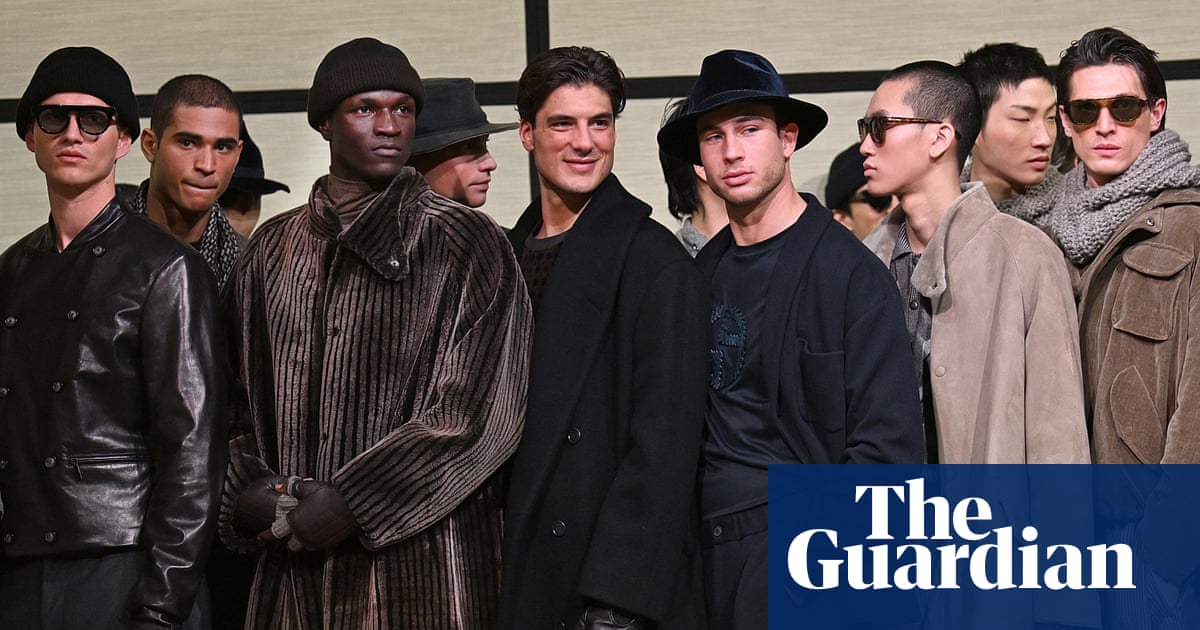It’s January, and the cliches are in full swing: it’s cold, dark, dry, you’re waiting for that next payslip … It doesn’t help that this month collides with the latest menswear fashion season. There’s nothing like scrolling Instagram with last night’s leftovers, watching a flurry of glamorous shows, parties and way out of budget trends trickle past you.
But it’s not all doom and gloom. There are plenty of quick, easy and, most importantly, affordable styling hacks you can adopt straight off the catwalk. Here are nine tricks to tap into now.
Get your accessories from the supermarket
Good news: you probably already own this season’s coveted accessories. Prada pinned pink corsages on to lapels (do it yourself with a supermarket carnation), while the fifth-generation Italian fashion house Kiton popped a ballpoint pen in its models’ breast pockets. Over at Dunhill, several models played with art deco gold lighters as they strolled down the catwalk. A Bic one borrowed from the smoking area will do.
Put on your trackie bums (again)
Facing the end of hybrid working? Try Magliano’s new high-low mix for continued comfort. Inspired by 1980s Italian counterculture, the Bologna-based brand took a working from home staple – trackie bums – and teamed it with an office essential – a smart leather belt. Note how the elastic from the sweatpants is intentionally tucked under the belt, which is key for convincing your boss that this is a curated “look” rather than the result of oversleeping and having to dress on the fly. Even Armani had drawstring trousers, which did the job.
Scuff your shoes
If grubby trainers, scratched fisherman sandals and chafed cowboy boots are good enough for Mrs Prada and Raf Simons, they are good enough for us. Feel your shoe-drobe is missing a key pair? Now is the time to swing by charity shops or hunt on secondhand sites for ones with original scuffing included.
Topsy-turvy layering
The standard order of dressing was turned on its head at Canali. Welcome to a season of disordered dressing. To nail the look, start with thin puffer jacket or vest. Next, add a smart blazer and finish off the look with a knitted jumper knotted and placed over the shoulders at 90 degrees.
Check it out
Wear an open checked shirt over a buttoned-up checked shirt, as seen at MSGM and Prada. Even better if they are at opposing ends of the colour wheel.
Pop your look through a Velvetiser
Sign up toFashion Statement
Style, with substance: what's really trending this week, a roundup of the best fashion journalism and your wardrobe dilemmas solved
after newsletter promotion
Have a pair of old Juicy Couture velour sweatpants buried at the bottom of your wardrobe? Or maybe a velvet blazer that only comes out to play during the festive season? Now is the time to dig it out. Everyone from Giorgio Armani to Milan newcomer Saul Nash included velvet pieces in their collections. The key is to play it down, so try plush trousers with a casual polo rather than a starched shirt.
Pierce your knitwear
What’s less painful than a daith/conch/tragus piercing? A punctured jumper. At Prada knitwear was perforated with silver metal chains from which hung miniature anchors. Head to your closest fishing tackle shop to emulate.
A bag for life 2.0
At Louis Vuitton, creative director Pharrell Williams and his collaborator Nigo riffed on the house’s signature orange paper shopping bags, sending mini leather versions down the catwalk. Several also imitated the dust bags that accompany purchases such as shoes. Time for a root through that stash of bags under the sink. And a reminder thathigh-end paper bags fetch high priceson resale sites.
The shrinking effect
The British designer Paul Smith styled shrunken jumpers over his signature playful shirts. Ideal for that knit you accidentally put on a hot wash. Smith explained when he first started his brand he couldn’t afford to do knitwear to his liking so instead would buy woollen jumpers from the schoolboy section in his local department store. Time to raid your kid’s wardrobe?
To read the complete version of this newsletter – complete with this week’s trending topics in The Measure and your wardrobe dilemmas solved –subscribe to receive Fashion Statementin your inbox every Thursday.
